- Your Government
-
Our Community
-
- About St. Helens History of St. HelensState of the CityCourthouse Dock Camera
- Local Events City Calendar Citizens Day in the ParkRecreation Activities Discover Columbia County Sand Island CampingKeep It Local CC
- Community Resources City Newsletter City Social Media Emergency Services New Resident InformationProtecting Our Environment
-
-
Business & Development
-
- Local Business Directory Get a Business License City Bids & RFPs Broadband Study
- Business in St. Helens St. Helens Advantages Directions & Transportation Incentives & Financing Resources for Businesses Business Guide Columbia Economic Team Chamber of Commerce
- Current City Projects Waterfront Redevelopment Public Safety Facility Strategic Work Plan
-
-
How Do I?
-
- Apply for a Job Apply for a Committee Find A Park Find COVID Info Find Forms Follow St. Helens - Facebook Follow St. Helens - Twitter Follow St. Helens - YouTube
- Get a Police Report Get a Business License Get a Library Card Get a Building Permit Newsletter Signup Past Public Meetings Pay My Water Bill
- Public Records Request Report a Nuisance Register for Rec Activity Reserve a Park Sign Up for the 911 Alerts Universal Fee Schedule
-
Understanding 'Parts Per Million'
What is a part per million, a part per billion, or even a part per trillion?
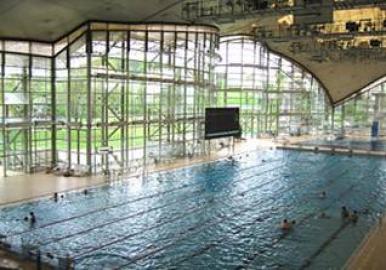 In our water quality reports and water analysis studies we see the results of contaminants in our water expressed as (A) parts per million, (ppm), or milligrams per liter, (mg/l). (these two units of measurement are interchangeable) (B) parts per billion (ppb) and (C) parts per trillion (micromhos per liter, µ/l). What do these units of measure on our report results actually tell you about your water quality, and does it really matter understanding ppm, ppb or µ/l?
In our water quality reports and water analysis studies we see the results of contaminants in our water expressed as (A) parts per million, (ppm), or milligrams per liter, (mg/l). (these two units of measurement are interchangeable) (B) parts per billion (ppb) and (C) parts per trillion (micromhos per liter, µ/l). What do these units of measure on our report results actually tell you about your water quality, and does it really matter understanding ppm, ppb or µ/l?
Nearly everyone we meet and speak with have difficulty understanding what these expressions actually mean, however, in the drinking water industry we take the concept of one part in a million, one part in a billion or one part in a trillion very seriously, since this is how we measure very small traces of chemicals or contaminants in water.
The water we use daily for drinking, cooking and bathing must meet strict rules of purity. To help you better understand what a part per million, part per billion and parts per trillion actually are:
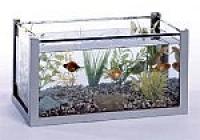
![]() If you were to fill a 10 gallon aquarium using an eyedropper, and added one drop at a time until the aquarium was full, it takes one million individual drops to do so, knowing this helps us understand that:
If you were to fill a 10 gallon aquarium using an eyedropper, and added one drop at a time until the aquarium was full, it takes one million individual drops to do so, knowing this helps us understand that:
- One part per million, or one milligram per liter (mg/l), would be equal to putting ONE drop of water from an eyedropper into 10 gallons of water.
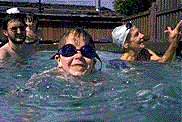
 One part per billion, or ppb, would be equal to adding ONE drop of water to a 10,000 gallon swimming pool. (A part per billion is 1,000 times smaller than a part per million)
One part per billion, or ppb, would be equal to adding ONE drop of water to a 10,000 gallon swimming pool. (A part per billion is 1,000 times smaller than a part per million)
- One part per trillion or micromhos per liter (μg/l) is 1,000 times smaller than a part per billion. Please notice the picture of a Junior size Olympic pool at the beginning of this article. The Junior size Olympic pool holds approximately 288,000 gallons of water. Still using our eyedropper, a single drip from our eyedropper of water into the volume of water held in 35 of these Junior size Olympic pools, or 10,000,000 gallons (that is ten million gallons) is extremely close to being a part per trillion! Another way to try and see this in your minds eye, if you were to take a single grain of granulated sugar and drop that single grain of sugar into the volume of water contained in 35 of these Junior sized Olympic pools, that is one part per trillion! Another very important point to remember about that single grain of sugar, as with the drips of water, would dissolve and would be dispersed into the entire body of 10,000,000 gallons, just as the single water drop becomes part of the entire volume of these pools.
The Filtration Process

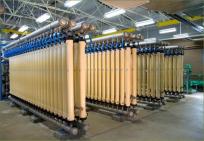
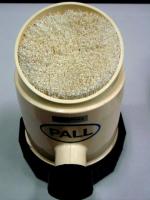
Housed inside the St. Helens water filtration facility (picture to left), there are 228 Micro filtration modules (middle picture) that make up the 5 racks of filters. Each rack has 52 individual modules. Inside each of these modules, there are 6,350 hollow fibers. (picture on right) The surface area inside this bundle of fibers is 538 sq. ft. If we were to take the fibers out of 107 of these modules and uniformly lay them out, side by side like a mat, the surface area of the fibers would completely cover an American football field from side line to side line to end zone to end zone! We have a little over two football fields of surface area that we are using to filter and produce 4 to 6 million gallons of fresh, high quality drinking water for the City of St. Helens.
And How About those Microns?
A micron is equal to one millionth of a meter, or about a tenth of the size of a droplet of mist or fog. It is a particulate smaller than the naked eye can see. To give you another idea for reference, one single strand of hair is approximately 20-100 microns in diameter. Now moving along to where the measurement of Microns comes into use. Pictured below are a few of “the critters” found in soil, lakes, rivers, streams, creeks and ponds and a single strand of human hair. Notice their sizes are expressed in Microns. One needs a microscope to see Giardia, Cryptosporidium and E. Coli, but you can see a hair strand with the naked eye. The next subtitle section discusses the size of the microfiltration fibers that remove these harmful "critters" from our water supply.

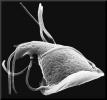
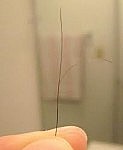
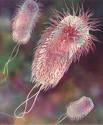
Giardia 8–15 micron Cryptosporidium 3–5 micron Strand of hair 20-100 micron E. Coli 0.2 microns
The Micro-Filtration Process
The pictures below begin with looking straight down at the END of a cluster of the 6,350 tiny hollow fibers bundled inside a module. The hollow center of the fiber is 0.7 of an inch in diameter, about the size of the shaft of an ordinary sewing pin. The center picture, is a magnified view of one of those single hollow fibers. The third picture to the right is a magnification of the wall of the fiber in the middle photo. The pore size of the skin is 0.1 microns, smaller than even the E. Coli bacteria which is 0.2 microns. Notice that there is not a straight path from the outer wall of the fiber to the hollow center into which the filtered water flows, this is referred to as a “tortuous” path. The tortuous path along with the small pore size of the micro fibers block and prevent not only E. Coli from being in the filtered water, but even Giardia, Cryptosporidium, Algae, along with sand and silt are trapped on the outside walls of the fibers.



I hope I did not lose you along the way. Any questions, suggestions or comments?
Please feel free to send me an e mail.


Phone: 503-397-1311
Return to the St. Helens Water Data page
Return to the Drinking Water Filtration page
